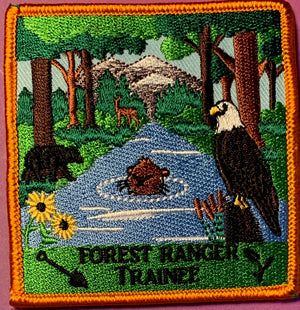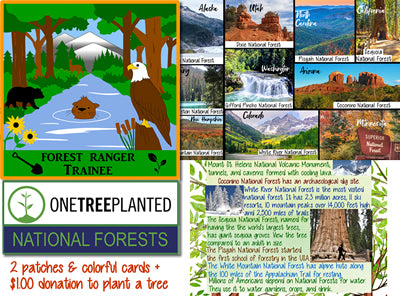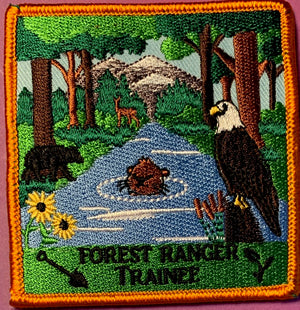1
/
of
2
Forest Ranger Trainee
Forest Ranger Trainee
Regular price
$1.90 USD
Regular price
Sale price
$1.90 USD
Unit price
/
per
Couldn't load pickup availability
A Forest Ranger Trainee is a person that wants to learn more about the National Forests or forests around them. This patch program encourages children to enjoy the outdoors, take care of the forests, plant trees, explore forests and learn more about what lives there. Never venture outdoors without adult supervision.
When you purchase the patch or the kit a Free Instant Download Worksheets will be sent to you.
Example of free worksheets:
- Learn more about a National Forest. Activity sheet to complete about location, size, and special sites to see.
- Parts of a tree worksheet (labeling with word box)
- Tree Rings labeled and how you can tell the age of a tree
- National forest map on a grid and questions to answer ( About how many miles is it from the campsite to the fire lookout?) (count the grid squares)
- Observe your backyard or visit an area to explore worksheet (how many trees, traces of animals, birds, nests, etc.)
- Leaf Identification sheet- Common leaves you may find in your backyard or local forest
- Information about bald eagles (activity and coloring sheet)
- Create a poster that has your own wildfire prevention message.
- Choose two animals to learn more about that live in forests worksheet (area to place information about animal Does it have fur, feathers, etc)
- Planting tree game board and pieces
Complete 3 requirements to earn this patch.
- Plant a tree to assist in restoring the forests. *When you purchased the Forest Ranger Trainee kit below your $1 donation planted a tree in a National Forest for you.
- Take the million tree challenge and assist in planting a tree in an area that was destroyed by wildfires. *When you purchase the patch kit you planted a tree in California to help restore the trees that were affected by the wildfires.
- Learn how to use a compass. If you have a map of the area, park, or national forest it should have a symbol on it for North. Start with an adult and line up north on the map and your compass. Once you are facing north you can find the other directions. South is behind you, east is to your right, and west is to your left. Try to find a simple location on the map like the campsite or trail. Use the sample map found online or at parks to get acquainted with maps. Learn to measure out distance and write down locations of places.
- Discover two different trees that live in the forest. Look at the leaves and either take a picture or trace out the leaf on paper. Look in books or the internet and find out the name of the tree by the leaf. Hint: Search trees that grow locally in your state or forest you visited.
- Visit a national forest. What was name of it? Where was it located? Was there anything interesting about the national forest? Did it have a forest ranger station?
- Did you know that the bald eagle, our national bird, has lost areas to place their nests in trees due to fires or other damage to forests. Find out more about the bald eagle. What does it look like? Why do they need a nest? What do they eat? Can they fly?
- Posters have been created for decades with messages on how to prevent forest fires. Smokey the Bear has been the mascot of these posters. Create a poster on paper that has your own wildfire prevention message. For extra, find out who smokey bear is or what he looks like.
- Observe the area where you live with an adult. You may live in near a National Forest or have a forest in your backyard. Visit an area to explore. What terrain does it have? Do you see any signs of animals? Does it have a trail?
- Learn about the parts of a tree. Why do trees have rings inside their trunks?
- There are many animals that live in the forest. Some live in the tops of trees, in nests, or in a home they made themselves. Choose two animals to learn more about that live in the forest.
- In some forests there are designated camping areas. They have places where you can pitch tents or shelters to sleep in, a campfire area, and sometimes a hiking trail or water area for other activities. Choose a day to camp with your family or group. What camping skills did you use or did you learn a new skill?
- Meet or interview a real Forest Ranger. Ask what their duties or what a day is like for them? Do they have to live in the ranger station?



